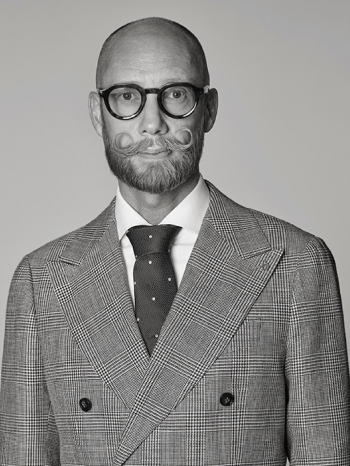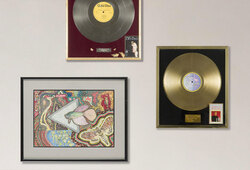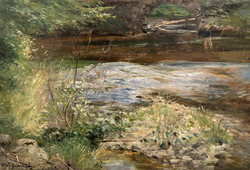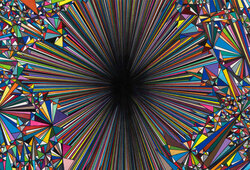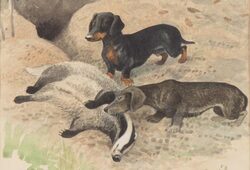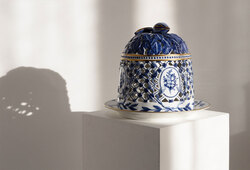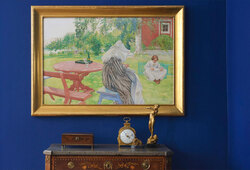Bukowskis presents: Anders Zorn "The Waltz"
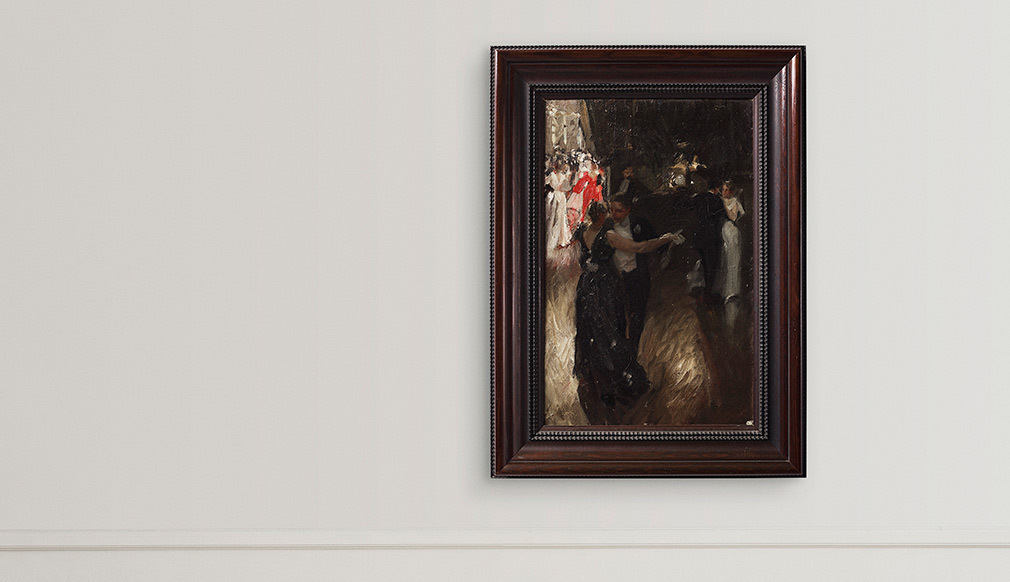
"The Waltz" by Anders Zorn will be sold at Important Winter Sale December 10–11. Estimate 5 000 000 - 7 000 000 SEK. Read more about the auction here >
Anders Zorn The Waltz
Bukowskis relationship with Anders Zorn has always been special. It was among other things at Bukowskis that around the turn of the century 1900, Anders Zorn's highly sought after etchings could be acquired.
Bukowskis' director during that period of time, Sigrid Carlsund, was also given a portrait by the artist in 1917, which still hangs on Arsenalsgatan 2 today.
Let us present Anders Zorn, 'The Watz'
During the first half of the 1890s, Anders Zorn worked with Paris as his main base. It was here, in the heart of the French capital, that he made a handful of oil paintings which have come to be regarded as masterpieces. The main works came to consist of three large-format compositions; all were exhibited at the prestigious Salon and found early buyers. 'The Waltz' (oil on canvas, 195 x 133 cm, Biltmore Estate, Asheville, North Carolina) was made in 1891 and after being exhibited in Copenhagen in 1892, it was included in Zorn's selection at the World's Fair in Chicago in 1893, where it was acquired by George W. Vanderbilt for $ 3000. "Omnibus" (oil on canvas, 126 x 88 cm, Isabella Stewart Gardner Museum, Boston) from 1892 was acquired by Isabella Stewart Gardner for $ 1600 at the same world exhibition. "Night effect" (oil on canvas, 161 x 106 cm, Gothenburg Art Museum), finally, was made in 1895 and bought by Pontus Fürstenberg in 1896 for 6000 SEK.
The three compositions, all of which express different aspects of life in the metropolis of Paris, are connected by the varied and intricate lighting problems the artist set out to solve and master in these canvases. The auction's painting is a preparatory work for the compositionally most advanced of the paintings in question: 'The Waltz'.
The subject was popular at the time. The French art and literature of the turn of the century often and happily depicted the balls of Parisian social life, whose social drama was an excellent and colourful background to genre painting and rich short stories. Possibly Zorn's composition connects to this contemporary tradition. Hans Henrik Brummer writes: "With 'Valsen' he had not only achieved an ingeniously constructed play of light in cold and hot zones, but he had also staged erotically charged episodes that belonged to the glittering spectacle. Two couples have left the crowd in the bright ballroom and are dancing into a darkly decorated room with dim lighting. Here is a man sitting in gloomy thoughts - 'the envious man in the background', according to Zorn himself"("To the delight of the eye and the gilding of the nation - Anders Zorn ", 1994).
The work to depict an erotically charged waltz in the company's salons required an extensive arrangement with several models as well as preparatory studies. Nordensvan reported from Anders Zorn's studio: "in the middle of the floor is the mannequin, a young lady, dressed in a ball gown of immeasurable elegance. The lady is named 'la belle Fatma' and she - or rather her dress - appears painted on the large painting that is leaning against the wall with the back in front ".
The fact that Zorn carried out preparatory studies, with varying models, is mentioned by Gerda Boëthius in her extensive biography from 1949:
"In one sketch we see Louis Sparre as the cavalier in 'The Waltz' and Emma also got to dance with one or the other, as he worked on distributing light and shadow. A black chalk drawing also bears witness to his intensive value studies, as well as a quick watercolour sketch where the emphasis is on the crowd of the ball audience and the lighting. The colours are except black only ocher and red." (ZORN. The artist, the painter, the engraver, the sculptor ", 1949). Louis Sparre has also written about how he, together with the other models, had had "unforgettable moments […] in the large, dimly lit studio" ("Strödda Zornminnen", 1942).
The best depiction of the creation of the work of art, however, is by Anders Zorn in his memoirs:
When I think back to this time in the early '90s, I especially remember my quest for the difficult task, a waltz. I liked to dance and wanted to try myself on such a movement task with motifs from the balls in society that I attended in Paris. There was such a mess of people that you could rarely take many steps in the ballroom without being pushed out of step. One had to go out in an antechamber to dance in peace, and I wanted to produce such an intimate scene. The mysterious lighting also attracted me. So this time I had to arrange myself in the best way in the studio. Count Louis Sparre, my countryman and artist's brother, was an excellent dancer and acted as my model together with Märta Petrini who had a beautiful neck and arms. Armand Dayot is the envious, lonely man in the background. To the face in the foreground was first a young French banker, but then I painted my own there before the painting was sent to the Salon. I remember that painting with missing. It was then purchased on Chicago exhibition by George Vanderbilt and now adorns his castle at Biltmore in the Southern States. Sad with such my paintings end up in the countryside where I have a hard time seeing them again. They are my offspring, and I love them all. They are the expression of the best within me, and I can not understand the artists who do not enjoy their own works" ([eds Birgitta Sandström], "Anders Zorn. Autobiographical notes", 2004).
Zorn's sadness over the painting's exile in the USA is probably shared by many Swedish art lovers. It is therefore gratifying that the preparatory smaller oil painting remains in Sweden. It was initially donated by Zorn to fellow artist Count Louis Sparre, who was the model in the painting. Given the differences that exist between the two versions in oil, there is reason to attach importance to the smaller variant of an independent work of art per se, rather than just a study of the larger painting in the United States. Among the deviations, apart from the fact that in the final version, Zorn painted his own face on the cavaliers of the foreground, also that the dresses seem to have changed places. The present version perpetuates Louis Sparre quietly waltzing with a dance partner wearing a dark patterned dress. In Vanderbilt's version, on the other hand, the foreground is occupied by an elegant lady whose white dress sweeps over the foreground, and you almost feel the sound of rustling silk.
The motif of movement in combination with Zorn's, las well as the masterful handling of the lighting problem that makes the composition so uniquely alive for the viewer. In his ingenious way, Zorn gives the whole composition a rhythmic movement which gathers the divided elements into uniformity and contrast effect. A dark curtain divides the piece into an illuminated and two semi-obscure thirds. Up in the right corner, a couple is dancing in complete obscurity, and behind these, the jealous spectator can be seen. In the foreground, half in the dark and half in the light is the other pair whose movement is elegantly captured. In the upper left corner is a glimpse of the large adjoining ballroom with a jumble of dancing couples in bright lighting. A subtle but significant detail also consists of the reflected light on the parquet floor. Tor Hedberg mentions this in his biography from 1923: "And in the foreground, the reflection of the piano lamp on the shiny floor, denoting the center of the circle, which is formed by the distant dancing couple, the spectating gentleman and the dancing lady's sweeping dress and as so unseen and so effectively shapes the orbiting movement of dance" ("Anders Zorn. Youth. 1860-1893", 1923).
Under the heading "The Championship", Tor Hedberg calls 'The Waltz' a "capital work" before stating that: "The Waltz, painted in 1891, has a motif to which Zorn has since returned several times, but with a completely different environment and a larger and deeper grip. A group of figures, captured in the moment by the rhythmic movement of the dance. The task is certainly one of the most difficult an artist can face, but Zorn was not the one who escaped difficulties. On the contrary, he seemed to find joy in accumulating them, in an almost overconfident confidence in his ability to overcome them."
It is difficult not to agree with this conclusion. Zorn would also return to dancing couples in a number of later motifs, to which, among other things. For example, the somewhat legendary, 'Midsummer Dance' (oil on canvas, 140 x 98 cm, 1897, National Museum) and 'Dance in Gopsmorstugan' (oil on canvas, 120 x 90 cm, 1914, Zornmuseet, Mora).
The question is, however, whether Zorn ever reached higher perfection in the genre than he achieved in 'The Waltz', which is described by Gerda Boëthius as follows: "a clair-obscure study with richer records than any of the previous ones, with the exception of 'Bread Baking'".
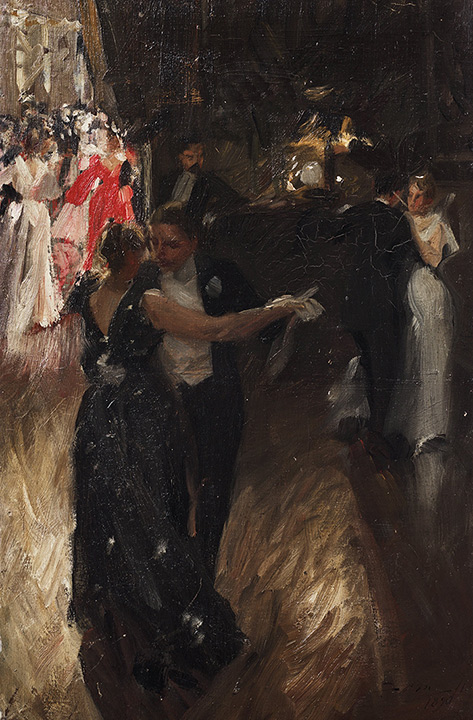
When is the viewing and auction?
Important Winter Sale
Viewing 4 – 9 December, Berzelii Park 1, Stockholm.
Auction 10 – 11 December, Arsenalsgatan 2, Stockholm
Contact our specialists

